Part 2 - Software and Hardware Continuing my thoughts on the VO at-home starter kit: once you have your Microphone nailed down you need a way to record and a way to make the audio sound clean like it came from a studio. Not to worry, there are a few cost-effective ways to get these things until your budget allows for you to purchase or create a proper vocal booth. [I’ll repeat my note from last time: I am NOT an expert. Engineers and sound designers like George Whittham and his like can tell you all about sound and sound absorption. They can design just the right space for you, long term. This article is meant only to help the novice get started with reasonable recording success while on a budget. Please don’t email me with your corrections and suggestions on how to better engineer a booth or set up. You’d loose me on paragraph one.] Recording Software There are lots of options for capturing your amazing performance in digital form in our current age. From the audio industry standard ProTools, Sony Sound Forge, Apple Garage Band (free with your purchase of an apple product) to any number of free and cheap audio software products, there is an ocean of options to choose from. But as a voice actor, you only need a program that can let you record audio well, make simple edits and output your file as an mp3. Programs like Pro Tools, Reason and Adobe Audition are tools for engineers and producers and are capable of high-end audio manipulation and editing. These programs are far more than you need and have price tags that match their capacities. For the VO Starter kit, consider one of the following, cost-effective options for your first foray into the world of audio: 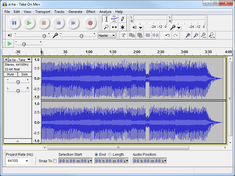 1.) Audacity (Windows/Mac) This Freeware program is almost as ubiquitous in the VO world as ProTools and has become the first software of choice for those breaking into the world of audition recording and submission. Why? Mostly because it’s free and stable. I will admit that I know little about Audacity, but the colleagues of mine who use it, like it well enough and you can’t beat the price. 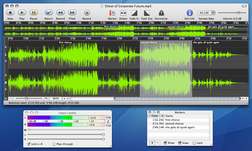 2.) Sound Studio (Mac only) Sound Studio is a mac-only software by a developer named Felt Tip and is available in the Apple App Store. Way before the iphone/tablet age, this software was developed as a simple, effective alternative to Apple’s Garage Band software. Sound studio, has since updated for iOS and come down from its original price point of 89.99 to a very affordable 29.99. It really only records and does simple edits. But the upside of it is it’s easy to use stable and allows you to save files in mp3 format without having to use an extra program (like itunes) or bouncing the file down in real time. Even though this software is not free, it is my top recommend for starting voice actors because it is easy to use and has features that can be very helpful for simple edits and production. 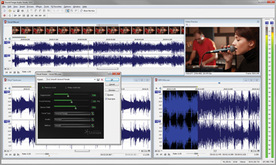 3.) Sony Sound Forge (Windows/Mac) By far, the most expensive of the options, (59.99) but for the windows user, Sound Forge is a sold audio program that can do all a voice actor needs. This software is easy to use and has a solid back-bone with lots of plug ins and user support. When I ask my Windows using colleagues what they record on, Sound Forge is second only to Audacity. 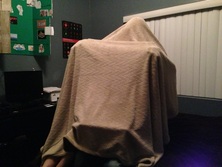 Acoustics – Faking a Studio The old saying holds true: “fake it ‘till you make it.” Until you buy or make a real isolation booth, you can fake the sound quality with a couple of very cost effective shortcuts. 1.) The Old Blanket My mentor, Patrick Fraley turned me onto this one and a quick internet search shows lots of resourceful people who have stumbled on the same thing. Hokey as it may be, you can throw a heavy blanket over yourself and your microphone and record as if you are an eight-year old in a fort. This stopgap is not for the talent living in a noisy area as it will not stop outside noises from bleeding onto your take, but if you are in a relatively quiet place The Old Blanket can be an effective way to isolate your voice from bouncing all over the room and sounding amateur. It doesn’t look pretty, and you have to make sure the mic doesn’t touch the blanket and create sound, but when you’re in a pinch and you need a studio sound without a studio, grab a heavy blanket or comforter and go to town. 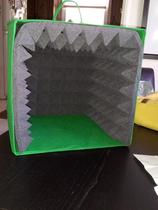 2.) The Porta-Booth Voice Actor Harlan Hogan created this little unit can explain its design and function better than I can. Suffice to say, his original, inexpensive “Traveling Studio” became so popular that he began professionally manufacturing them and offers a very slick version for sale on his website. However, you can follow his directions online and make your own 1.0 version for about $40.00 and 30 minutes of your time. I finally made one last year and it is my go-to when I have to do a last minute audition from home. Like The Old Blanket, the Porta-Booth is not meant to isolate your sound from all noise, but it creates a reasonable facsimile to a studio when it comes to eliminating room tone and getting a clean record. A Word About iOS I have personally not yet recorded audition quality audio on my phone or tablet, but people that I trust who have swear by the following 2 products: 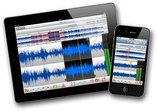 1.) Twisted WAVE for iOS – recording software that is cost effective and stable on iPhone and iPad. Some of my colleagues who have a lot of recording to do while they are on the road have sung the praises of this handy little program and have submitted recordings of all kinds recorded in this software.  2.) The Mic by Apogee – a USB microphone designed for iOS. One VO pro and audio geek that I know and love claims this little beast can get you the sound of a high-end name-brand microphone for a fraction of the cost. The mic runs a little over $200 and comes ready to go – just plug and play. I have received similar reviews from other voice actors who say this little mic is their device of choice whether they are on the road or not. There are so many options for the voice actor to get great sound in the internet age. Many of which I do not cover here. You may have your favorite software or hard ware that you swear by when it comes to your home recording and I certainly invite you to share. These are my recommends based on my experience and those of my students and peers. Regardless of your ultimate choice of equipment, the point is to narrow the field enough so you can choose. And then, get recording!
5 Comments
4/21/2015 06:35:06 pm
Informative post on iOS mobile application development!!! As the usage of iPhones keep on increasing, there is massive demand for best performing Apps and Games for iOS platform.
Reply
4/14/2016 09:58:44 am
Hey Mick! Thanks for all the wealth of knowledge found on your site. Wish you the best in all your endeavors.
Reply
There was very wonderful information and that's great one. I really appreciate the kind words, thanks for sharing that valuable information.
Reply
Your comment will be posted after it is approved.
Leave a Reply. |
AuthorThis is the Mick Wingert Website. The blog is by Mick unless otherwise specified. Mick's Bio can be found here. Archives
October 2015
Categories
All
|
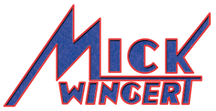
 RSS Feed
RSS Feed